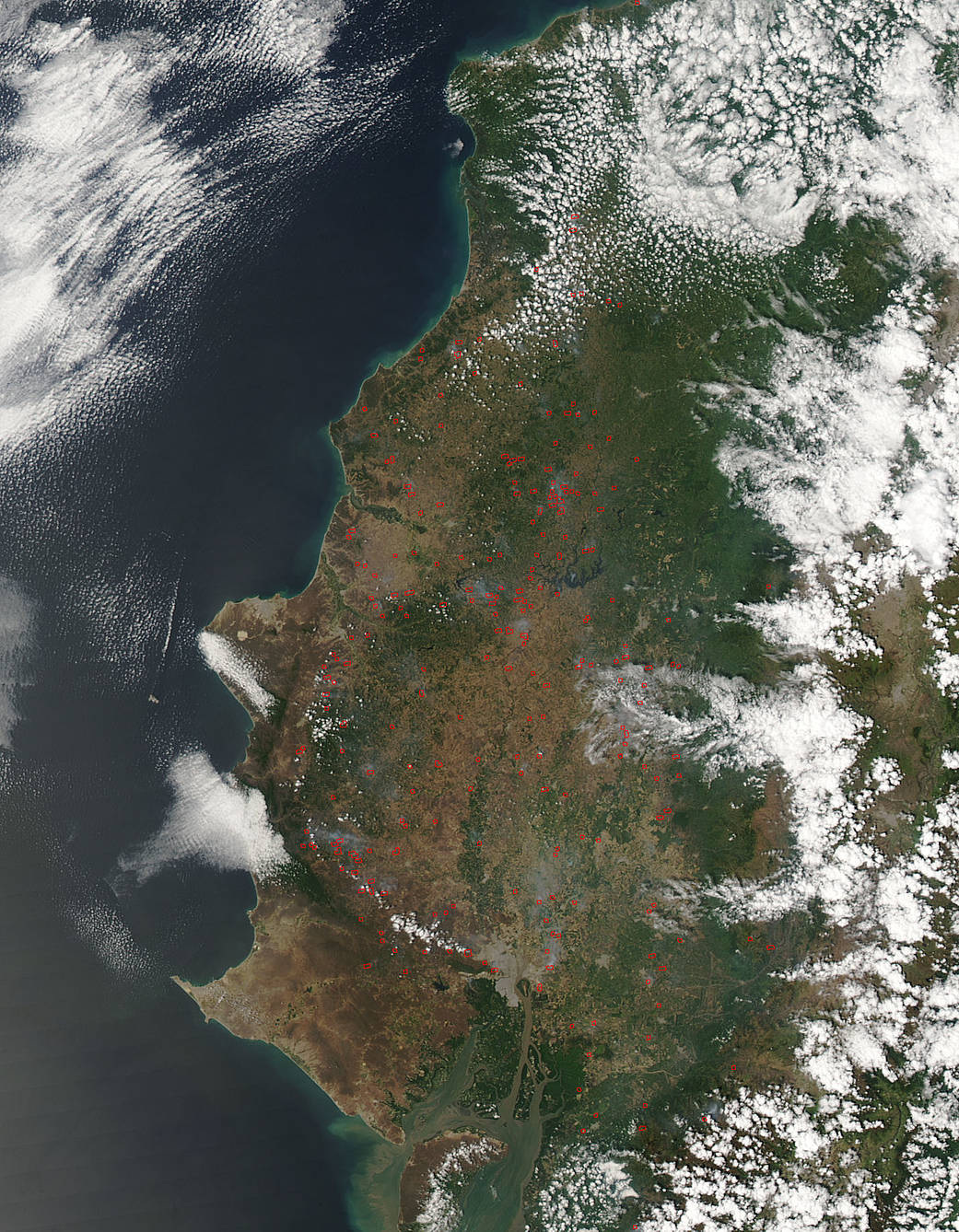NASA’s Aqua satellite captured this image on November 01, 2016, of Ecuador showing hundreds of fires spread across the landscape. There are several explanations as to the causes of these fires. One explanation for the hundreds of fires detected in Ecuador would be from the current volcanic activity taking place in the region. Currently in the area are two active volcanoes. The Sangay and the Reventador which are both located in this area of Ecuador seen in the image. The Sangay volcano is producing volcanic activity of frequent, moderate eruptions (strombolian eruptions). The lava is basaltic, but sufficiently viscous for entrapped gases to build up a pressure which is released in continuous small explosions. The explosion produce hot ash which, in turn, can ignite dry grasses and cause wildfires. The Sangay volcano has been listed as being active in the area since May of this year. The Reventador volcano is actually more active and more dangerous of the two. Reventador is currently spewing hot volcanic ash into the atmosphere which can carry it across a large area. The last volcanic ash report that was released was on October 31, 2016, which is the day before this satellite image was taken by the Aqua satellite. So too Reventador eruptions tend to be more explosive and effusive than those of Sangay.
A second explanation could just be the dry environment, coupled with lightning strikes that leads to large scale wildfires that are difficult to eradicate due to the amount of fuel in dry grasses and trees.
The third reason could be that these fires are caused by humans. Last year there were massive wildfire outbreaks in Ecuador in September and ten people were arrested on suspicion of setting these fires which threatened the city of Quito.
All fires basically begin the same way with a heat source causing vegetation to flare and it’s often difficult to establish the cause from space, but sadly the effect is always the same–major destruction and long-term after effects.
NASA image courtesy Jeff Schmaltz, MODIS Rapid Response Team. Caption: NASA/Goddard, Lynn Jenner



























